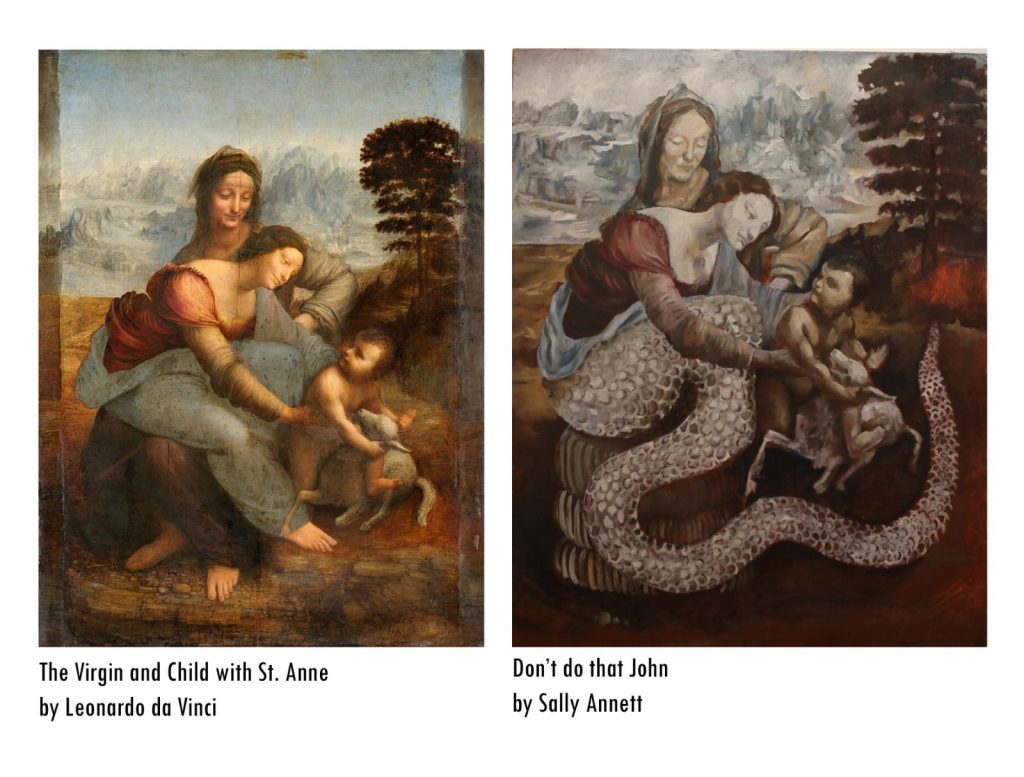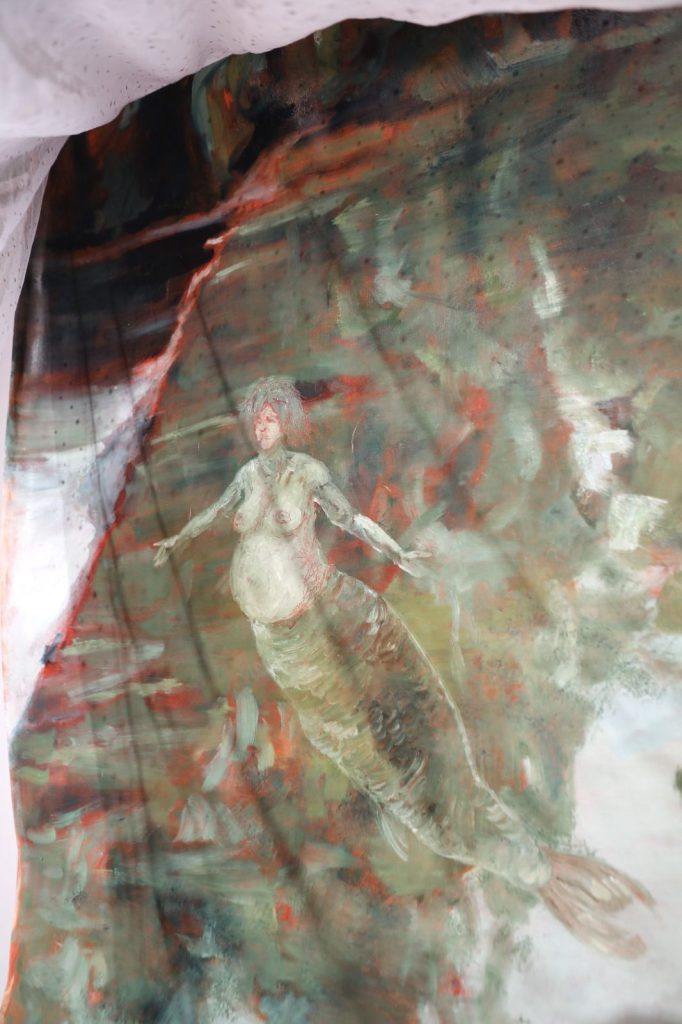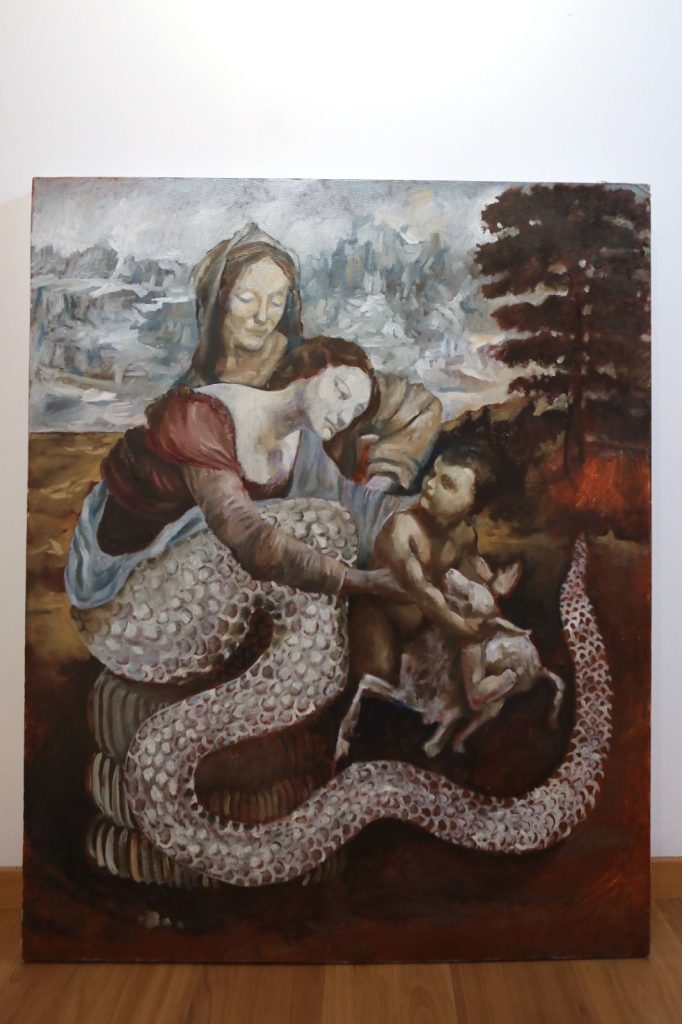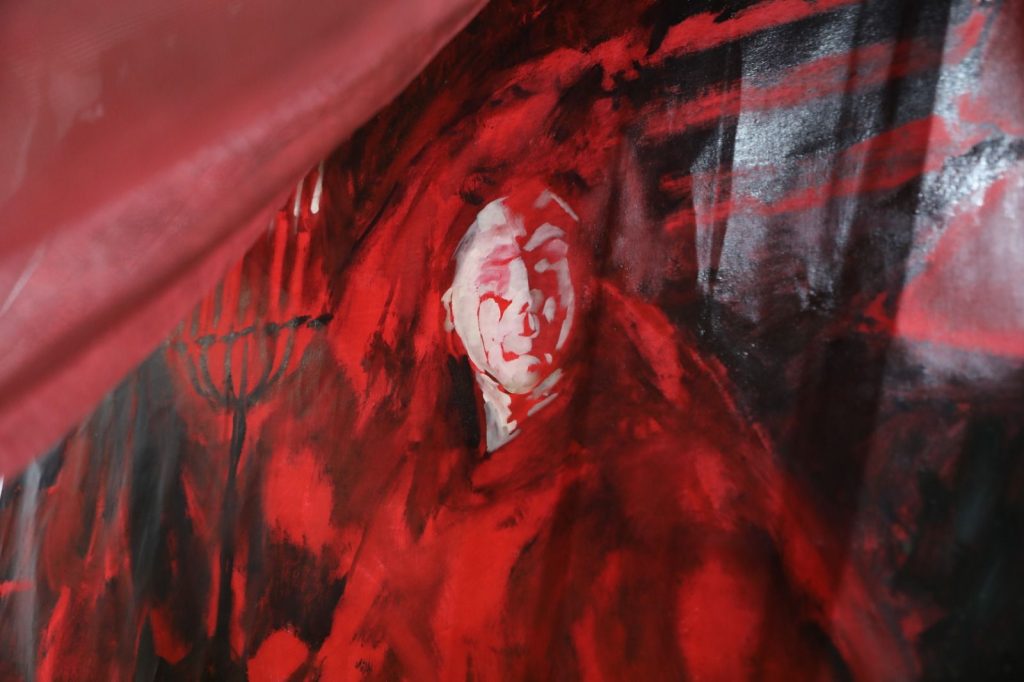Sally Annett has been working on this project since 2017, and now, seven years later, she’s sharing her vision with the world. There’s something special about the number seven. Whether Sally chose it intentionally or not, it feels significant. In the Bible, seven is a sacred number – God created the world in six days and rested on the seventh. Seven represents completeness, cycles, and something deeply spiritual. This connection adds a layer of mystery to her work, as if this exhibition is the result of a deeply creative process, ready to be unveiled.
One piece I keep returning to is Don’t Do That, John. This painting plays with Leonardo da Vinci’s The Virgin and Child with Saint Anne, a work famously left unfinished and open to interpretation.

Sally seems to pick up where Leonardo left off, offering her own perspective. In her version, Saint Anne cradles her serpent-daughter, Mary, who tends to the young Jesus holding a sacrificial lamb.
At first, I couldn’t help but focus on the serpent tail. Because of its role in biblical stories, I immediately saw it as a symbol of betrayal. It felt unsettling, especially tied to Mary, who is often depicted as pure and nurturing.
But then I began to think about the serpent’s other meanings, particularly its connection to the Melusine myth. Melusine, like Mary in this painting, is both human and otherworldly, a figure of mystery and transformation. Serpents are also deeply symbolic: they represent renewal and rebirth, shedding their skin to start anew. In some species, serpents can reproduce without a male, and suddenly, this detail felt significant. Mary, as the mother of Jesus, gave life without a male partner. Through Sally’s use of the serpent, this painting became less about betrayal and more about creation, transformation, and feminine power.
The title, “Don’t Do That, John,” adds another layer of complexity. It can be interpreted in many ways, but for me, it feels deeply maternal. In Christian tradition, John baptizing Jesus is a pivotal moment, marking the beginning of Jesus’ journey toward sacrifice and death. The title makes me think of a mother’s instinct to protect her child – perhaps it’s Mary’s unspoken plea to pause, to stop the events that will ultimately lead to her son’s crucifixion. It’s a reminder that beneath the divine story, there is also a human story of a mother and her son, filled with love, fear, and loss.
Sally’s work gives the viewer a chance to lift the veil, inviting you to interpret each piece in your own way. By mixing myth, religion, and personal reflection, she explores the divine feminine and encourages you to look deeper, discovering connections you might not have seen before.
By Rhianne Evans
For more information on Sally Annett or to simply explore her work further, please click this link which will take you to her website.
https://www.atelierdemelusine.com/
















All of Sally’s work from this series exploring the divine femininity, behind the veil – is currently on exhibition and can be found at this address:
15 rue de Montebello, Montmorillon, Vienne, 86500, France. 6/12/2024 – 6/01/2025 Thursday – Sunday 14h-17h.

